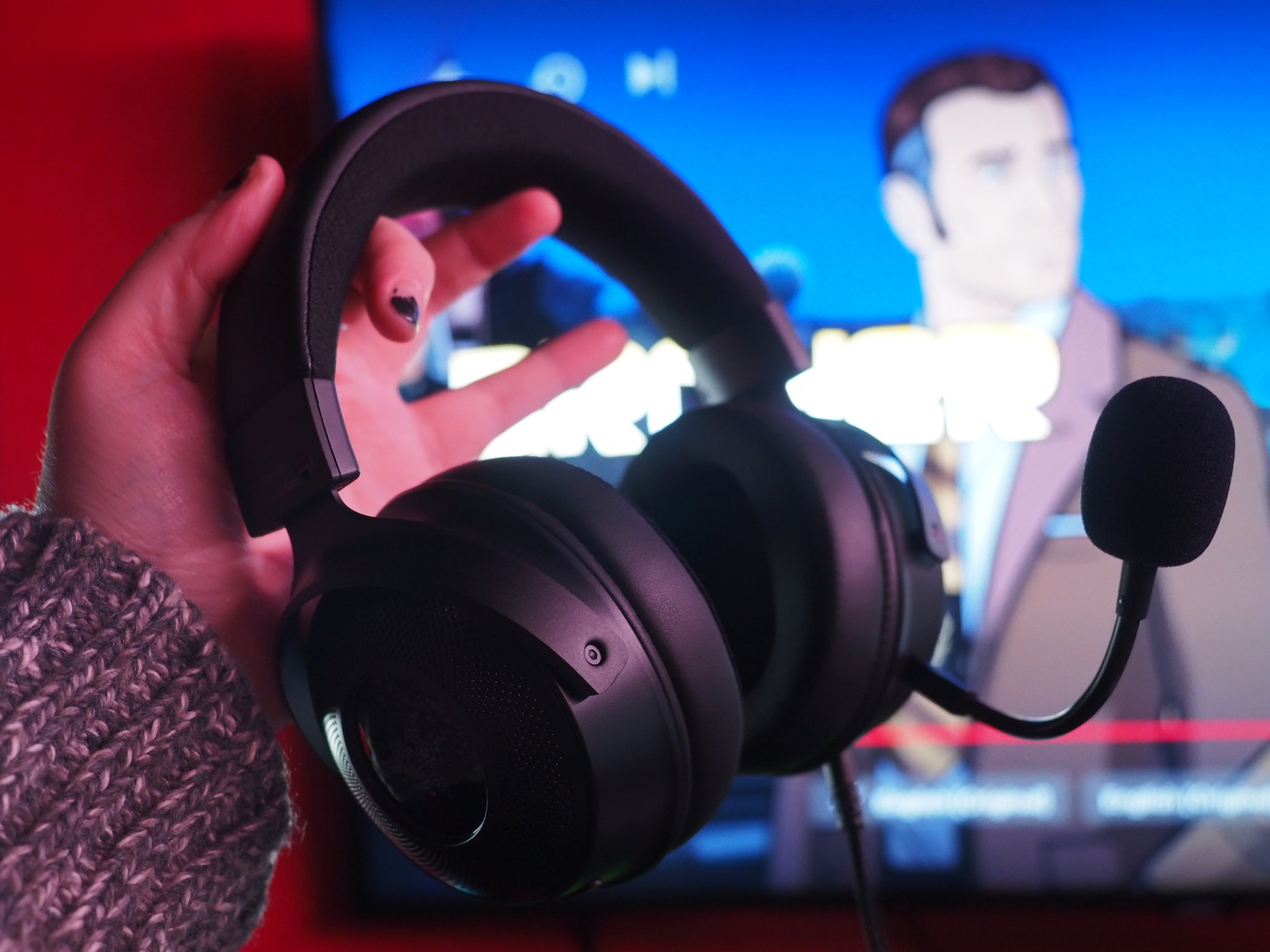 Source: Windows Central
Source: Windows Central
The Razer Kraken headset lineup is one of the firm’s most iconic range of gaming PC headset products, and also one of its oldest. This year, they refreshed their Kraken series with its “V3” line, which includes various options and different price points.
The Kraken V3 HyperSense is their mid-range option, which includes some unique force feedback motors that add a vibration sensation into the powerful 50mm cups. The downside is the $130 price point, which puts them a fair bit higher than most decent gaming headsets in this form factor. Does the HyperSense feedback make the price worthwhile? Let’s take a listen.
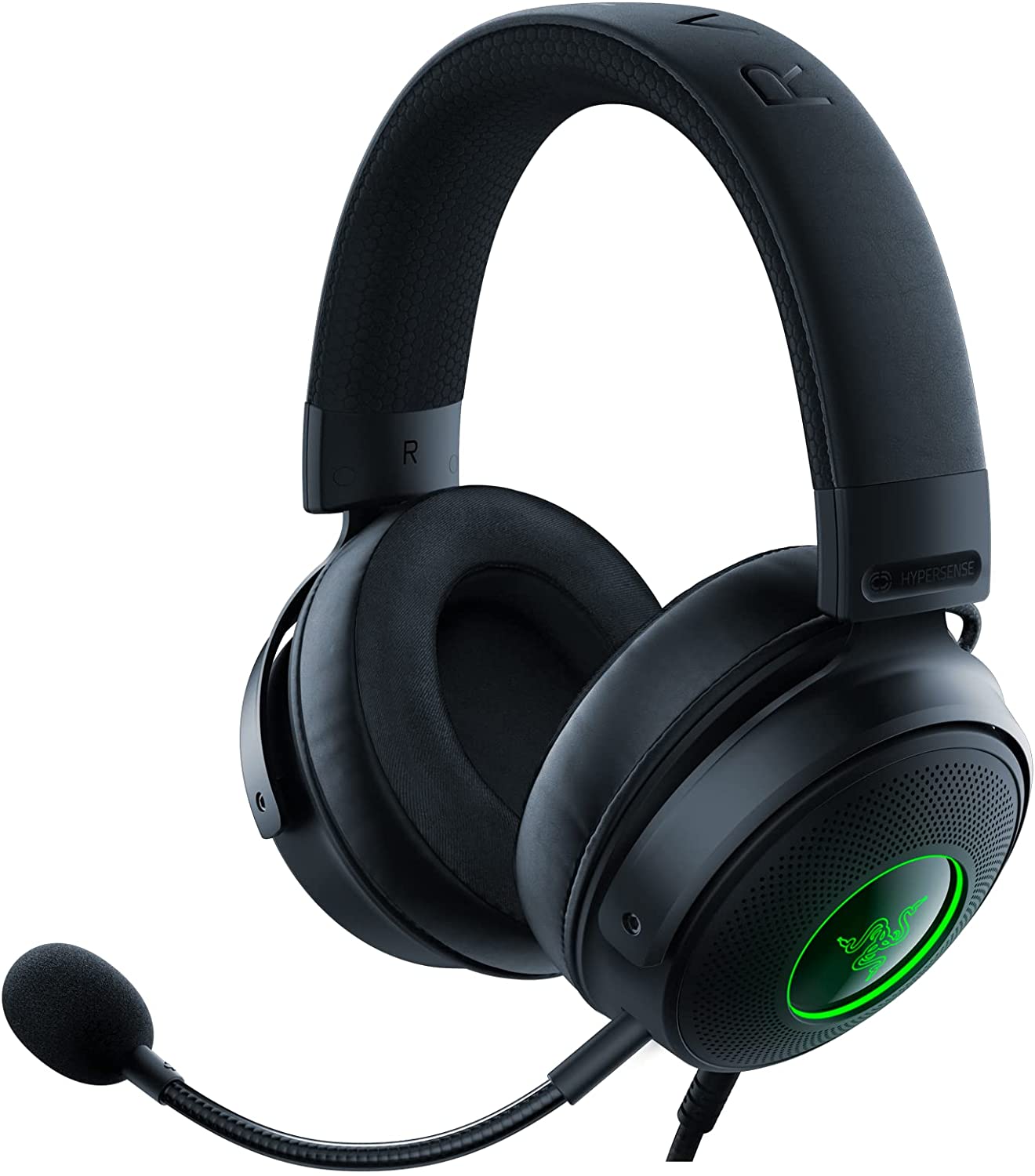
Razer Kraken V3 HyperSense
Bottom line: The Razer Kraken V3 HyperSense ticks all the right boxes: amazing sound, high-quality mic, great construction, and grade-A comfort. The price is a bit hard to swallow, and the value of HyperSense will vary depending on the user.
The Good
- Truly great sound
- HyperSense feedback is a unique hook
- The mic quality is excellent
- Comfort and construction get an A grade
The Bad
- No mic monitoring
- Can’t control RGB lights
- A little pricy
Razer Kraken V3 HyperSense: Price and availability
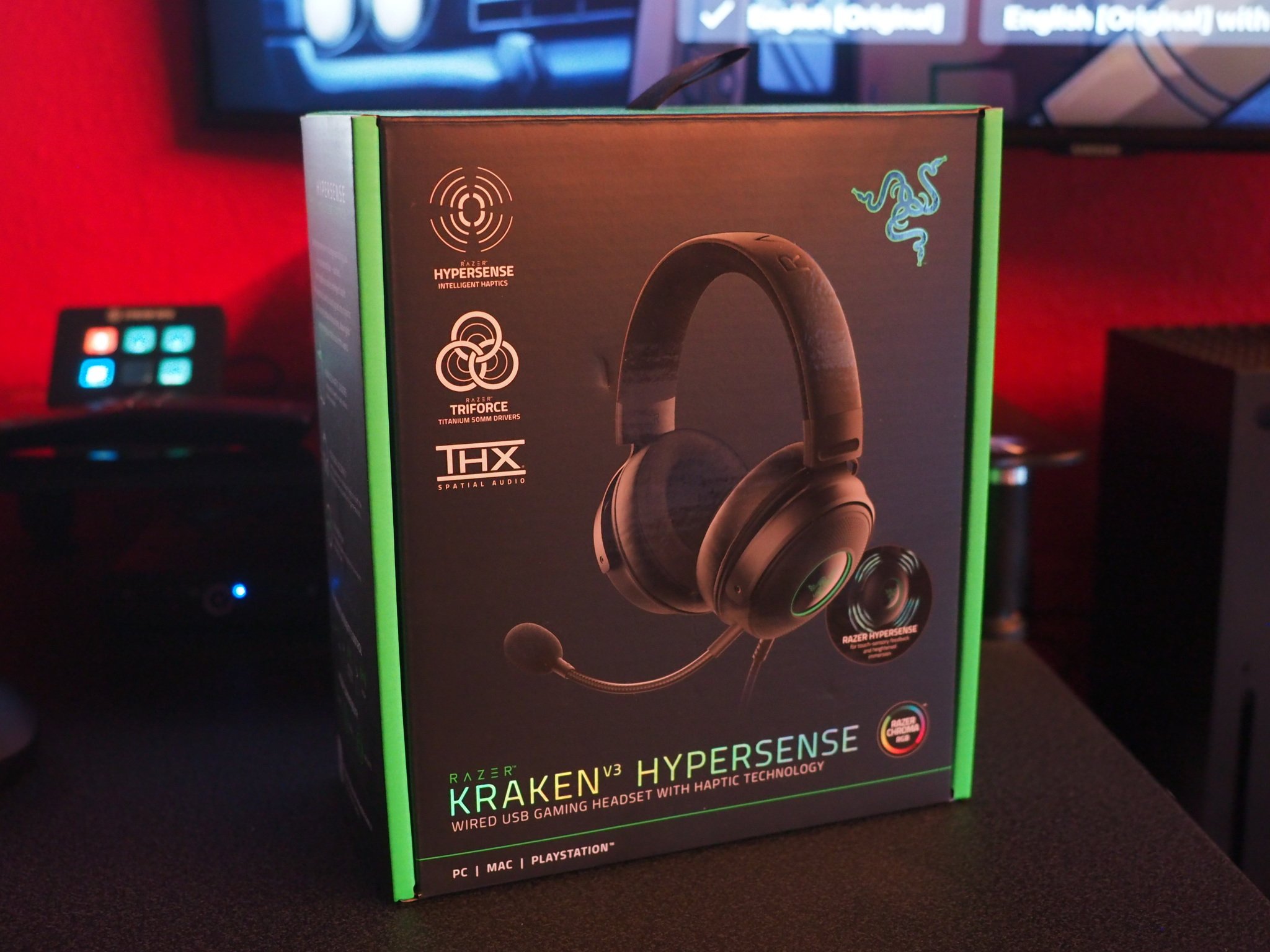
The Razer Kraken V3 HyperSense is generally available at all major retailers in most Razer-supported regions. The headset costs $130 as standard, but may enjoy a sale when Black Friday or Amazon Prime Day roll around. The supplies of this headset are stable as of writing, with many stocks in at both Amazon and Razer.
Razer Kraken V3 HyperSense: The good stuff

As headset construction goes, Razer once again proves it’s among the best in the business. The Razer Kraken V3 HyperSense easily scores top marks for design and execution, with strong metal clasps atop a reinforced headband, all polished with thick, airy cushions. The fibers used on the earcups as of particularly high quality, and should keep your ears plenty comfy even across marathon gaming sessions.
The Kraken V3 headset also has Razer’s typical RGB light-up earcups, with the logos on the side cycling across a rainbow color spectrum slowly. The microphone is detachable, and also well executed, with very clear comms reproduction and rigid flexibility, meaning it conforms to exactly where you intended to put it. The USB cable for connectivity is also generously long, and fabric, as is customary with Razer products.
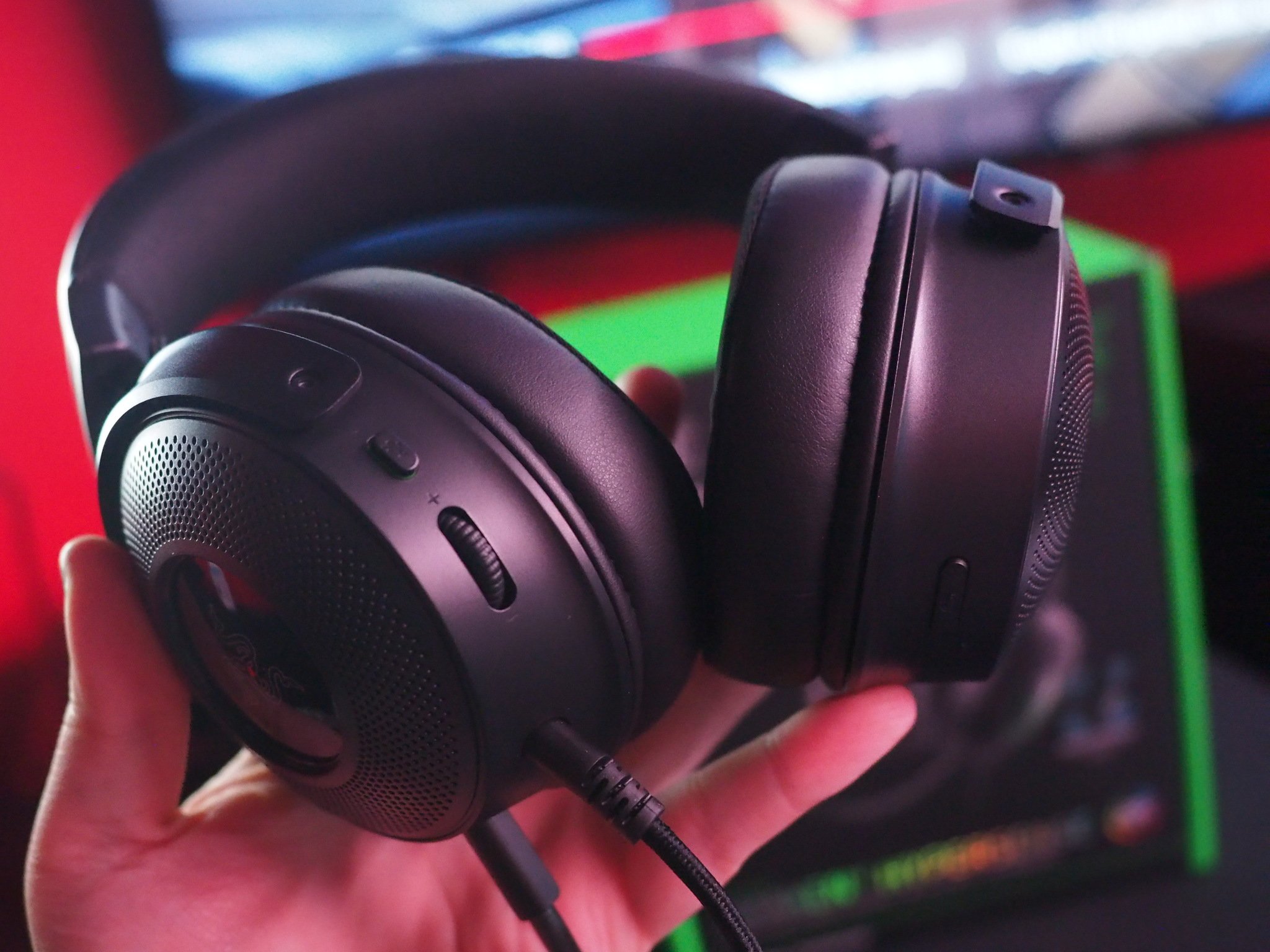
On sound, the Razer Kraken V3 HyperSense delivers in a big way. Beefy 50mm titanium speakers offer a broad cavernous soundscape, which can be elevated further by activating Windows spatial audio features on PC. Crystal clear reproduction of bass and mids, with good separation, clarity, and balance. Often I’ve found gaming headsets come off a bit crunchy, tuned to accentuate sound effects that might give you a tactical edge, but Razer’s does so in a way that is subtle, without punching through the soundscape. And then, there is HyperSense itself.
HyperSense is a uniquely Razer vibration feedback motor that revs up alongside game sounds. HyperSense uses an algorithm to inject a sense of physicality to certain audio frequencies, across things like explosions and animal roars. Playing Monster Hunter — a game well versed in animal roars — was an interesting experience with the HyperSense. The screeching Bazelgeuse dragon was uniquely irritating with the HyperSense feedback motor on maximum; thankfully, you can adjust it down three stages, or turn it off completely.
It’s strange, because sometimes I really enjoyed the HyperSense feedback, and other times I did not, and its implementation is clearly factored into that $130 price tag.
Razer Kraken V3 HyperSense: What’s not so good

Razer HyperSense motors undoubtedly added to the price of the Kraken V3 HyperSense, and it’s hard to say whether or not it’s a worthwhile addition. Most games won’t support the feature natively, leaving you to rely on an algorithm. When the vibrations kicked in on animal movements or attacks it made a lot of sense, but when they triggered on menu sound effects or inventory selection, I found it to be irritating. Eventually, I just turned it off completely, which kind of nullifies the whole point of the headset.
There is a cheaper version of this headset that comes without the HyperSense, and I’m feeling more inclined to recommend that instead. This headset could’ve done a bit more to sweeten the deal. It has no integration with Razer Synapse as far as I could tell, meaning there’s no way to configure or disable the lights on it, which generally look a bit silly in my view — but I’m not a twent-teen-something game streamer. There’s also no mic monitoring, which is a strange omission in a USB-based PC headset at this price point.
I would recommend the HyperSense to people who might enjoy it, but the kicker is, you can’t really try it without buying it. Some of you may really like it, and keep it activated all the time — for those who will turn it off, there are far cheaper headsets that also don’t have it.
Razer Kraken V3 HyperSense: Competition
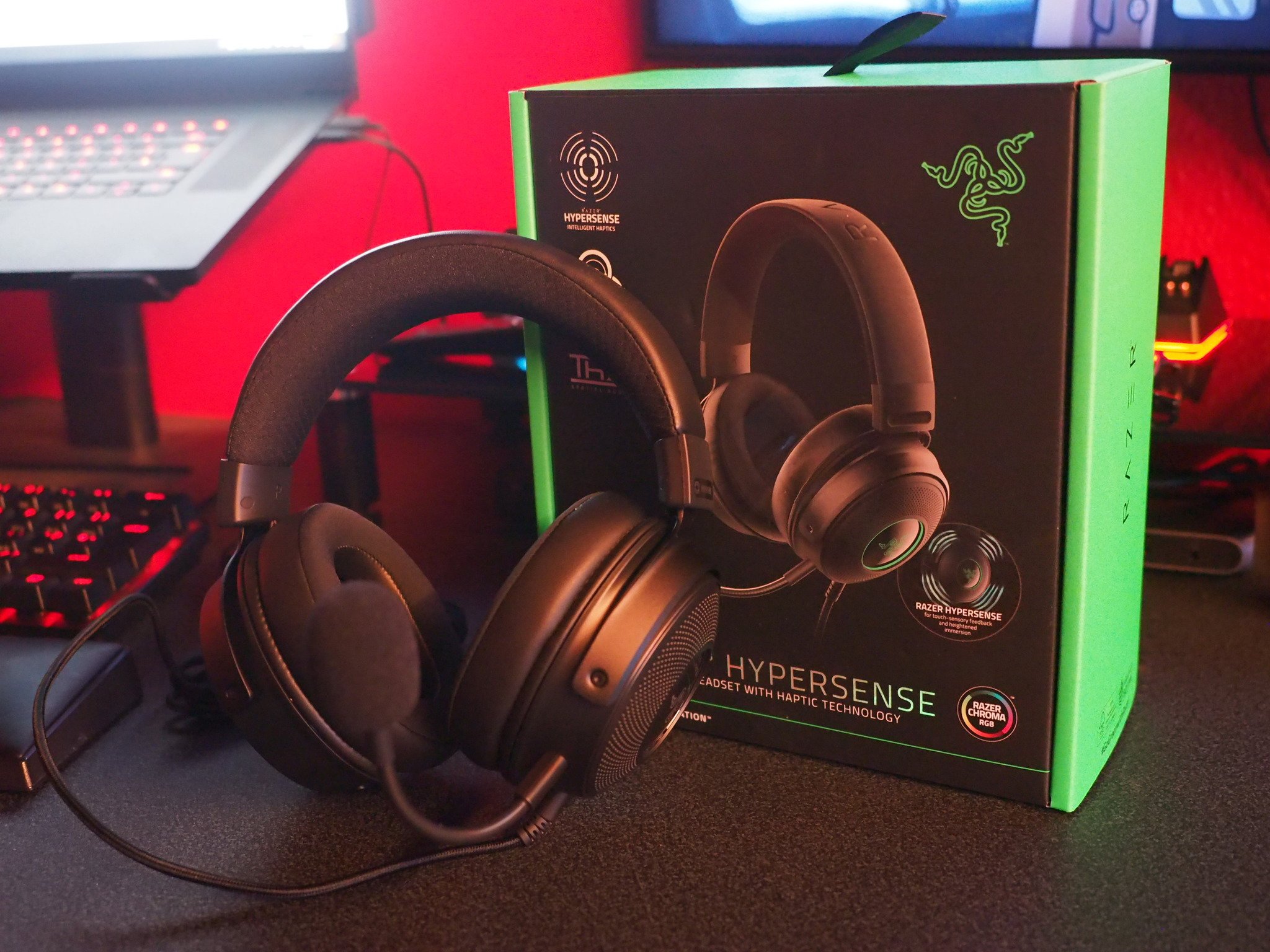
The Razer Kraken V3 HyperSense ironically competes with itself a bit. The Razer Kraken V3 sans HyperSense is probably a much better deal, and comes in at a far more price appropriate $100. I think for the vast majority of gamers, I would recommend the regular Razer Kraken V3 instead, over the HyperSense.
Razer Kraken V3 HyperSense: Should you buy it?

The Razer Kraken V3 HyperSense is a curious product. Considering its near-identical Razer Kraken V3 sibling is $30 cheaper, I’m more inclined to recommend that instead of this, since the value of HyperSense force feedback is potentially subjective. It was fun for a while, but after getting vibrations while cycling through menus in games became irritating, I turned it off and never looked back, which isn’t a great representation of its value.
That being said, almost every other aspect of this headset was flawless. Immaculate and balanced sound, gorgeous materials, with a high-quality mic and reassuring construction. Thankfully, there is a $30 cheaper version of this headset without HyperSense I am absolutely eager to recommend instead.
Haptics probably do have a place in headsets at some point, but I think until the algorithms are smart enough to determine what should and shouldn’t have sound, the value is hard to determine. Still, Razer has shown a strong capacity to partner up with studios on some of its more niche features. It’s always cool to see when a PC game syncs up with my Razer Chroma lighting products, so it’s likely that Razer will work with developers and refine how the feature resonates with games. For now, though, it’s a sensation that’s hard to put into words. For $30 extra you can try it yourself, or $30 less, go with a tried and tested HyperSenseless version — whichever you choose, you won’t be disappointed. This is a truly great headset overall.

Razer Kraken V3 HyperSense
Bottom line: The Razer Kraken V3 HyperSense is a truly great headset with impressive sound, a great mic, high-quality construction, and solid voice reproduction. The only question hangs over its price, which considering the lack of mic monitoring or light controls, really begs the question: Do you want a vibrating headset?
We may earn a commission for purchases using our links. Learn more.

These are the Razer mice to buy in 2021
Razer makes some of the best gaming mice around, so it’s natural that you’re considering one for your next purchase. But Razer also has a pretty large portfolio, so we’re going to help you choose the right one.




